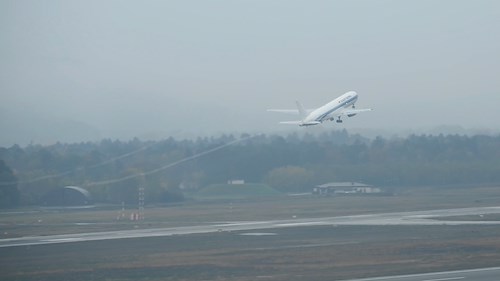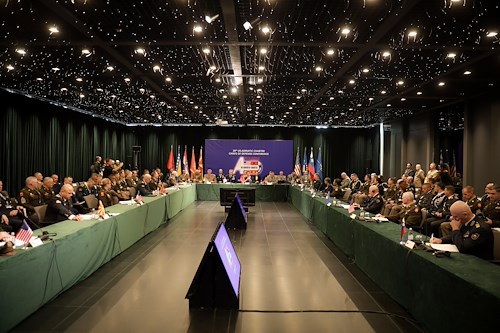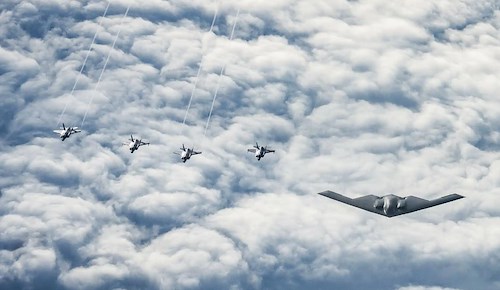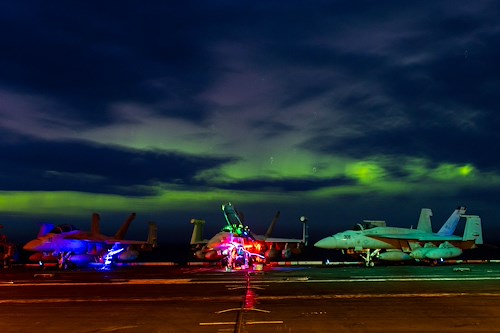Gallery contains 3 images
×
Photo 1 of 3
86th Airlift Wing/Public Affairs
Evacuees from Afghanistan board the final flight to the United States from Ramstein Air Base, Germany, Oct. 30, 2021. Most evacuees departed by Oct. 17, but a small number remained at Ramstein after testing positive for COVID-19 during a pre-departure screening. Those patients and their families were placed in isolation until it was safe to travel. (U.S. Air Force photo by Staff Sgt. Philip Bryant)
Photo by: U.S. European Command Public Affairs
Photo 2 of 3
86th Airlift Wing/Public Affairs
Afghan evacuees board the final flight to the United States from Ramstein Air Base, Germany, Oct. 30, 2021. Most evacuees departed by Oct. 17, but a small number remained at Ramstein after testing positive for COVID-19 during a pre-departure screening. Those patients and their families were placed in isolation until it was safe to travel. (U.S. Air Force photo by Senior Airman Milton Hamilton)
Photo by: Senior Airman Milton Hamilton
Photo 3 of 3
86th Airlift Wing/Public Affairs
Afghan evacuees board the final flight to the United States from Ramstein Air Base, Germany, Oct. 30, 2021. Most evacuees departed by Oct. 17, but a small number remained at Ramstein after testing positive for COVID-19 during a pre-departure screening. Those patients and their families were placed in isolation until it was safe to travel. (U.S. Air Force photo by Staff Sgt. Philip Bryant)
Photo by: U.S. European Command Public Affairs
The final flight carrying Afghan evacuees to the United States from Ramstein Air Base departed Germany Oct. 30, 71 days after the first flights from Afghanistan began arriving at the installation.
All remaining evacuees departed on a commercial B767, marking the end of the operation here.
For over two months, the Air Force’s largest mobility hub served as a transitory and sustainment location for the largest humanitarian airlift mission in history.
“Over the last two months, the women and men of our military and their families, government agencies, and the international community dedicated themselves in service to provide transportation, food, shelter, and medical care for the people of Afghanistan,” said U.S. Air Force Maj. Gen. Randall Reed, Third Air Force commander. “When they were in need, our country and its allies delivered. As a result, these courageous travelers can now begin a new chapter in their lives.”
Ramstein became U.S. European Command’s primary evacuation hub soon after the first planes arrived Aug. 20 here.
Ramstein Airmen, joint partners, family members, and thousands of volunteers and augmentees quickly assembled to create a city of “pods” on Ramstein’s flight line to hold the nearly 35,000 evacuees who processed through Ramstein during the operation.
As the mission’s magnitude continued to grow, multiple communities stepped up to the occasion in a surge of support for the evacuee population.
Approximately 6,500 U.S. Air Force Airmen, U.S. Army Soldiers, and NATO allies from the Kaiserslautern Military Community and other military installations provided direct support and expertise including logistics, maintenance, civil engineering, security, sanitation, and medical care.
Within days of evacuees arriving, spouses had set up a clothing and donation center where they received and sorted donations to be distributed to evacuees living in the pods.
Additionally, more than 2,500 local and host nation volunteers assisted with food service, English language workshops, spiritual welfare, donations, and other support. In all, approximately 110 tons of donations were provided to Afghan evacuees and more than 1.5 million meals were served to evacuees at Ramstein and Rhine Ordnance Barracks.
The 86th Airlift Wing also ensured that cultural, dietary and religious needs of evacuees were a priority in the execution of the mission. Service members constructed prayer tents and filled the tents with donated prayer rugs. Chaplain (Capt.) Mir Ali - one of five imams in the Air Force - blessed thousands of meals on a daily basis.
“I remain incredibly proud of the immense work the entire team has done throughout this operation,” said Brig. Gen. Josh Olson, 86th Airlift Wing commander. “We ran to our nation's call and met multiple challenges that we neither expected nor trained for. The success of this amazing operation could not have been achieved without the outpouring of support from our service members and their families, German partners, NATO, non-governmental organizations, volunteers, and interagency partners. They were the true epitome of selflessness, with nonstop caring, feeding, and protecting our guests for nearly two months while they awaited transportation to their next destination. At the end of the day, this operation was all about humanity, saving lives, and providing hope for a better tomorrow.”
At the height of the evacuation, approximately 21,000 evacuees were awaiting onward travel at Ramstein and Rhine Ordnance Barracks. In addition, 39 babies were born to Afghan evacuees over the course of the operation, including one on a U.S. Air Force C-17 Globemaster III moments after the plane landed here.
The majority of Afghans arrived via C-17s. Each flight carried hundreds of passengers, often landing minutes apart. The 521st Air Mobility Operations Wing at Ramstein managed the inbound and outbound airflow throughout the operation.
“I am so proud of the Mobility Airmen, interagency partners and all of Team Ramstein who came together, fueled by human compassion and dedication to the mission, to ensure the safe transit of evacuees,” said Col. Adrienne Williams, 521st AMOW commander. “To witness this heroic effort firsthand was a sight to be seen and an experience that will never be forgotten.”
In late September, flights to the U.S. from Ramstein temporarily paused at the recommendation of the U.S. Centers for Disease Control after a small number of measles cases were discovered among evacuees already at transitory hubs in the United States.
Approximately 8,800 evacuees at Ramstein and Rhine Ordnance Barracks received vaccinations for measles, mumps and rubella (MMR), varicella (chickenpox), COVID-19, and influenza over the next three weeks.
Flights to the United States resumed Oct. 9, and intelligence, law enforcement, and counterterrorism professionals conducted screening and security vetting for all Afghans prior to their departure.
Most evacuees departed by Oct. 17, but a small number remained here after testing positive for COVID-19 during pre-departure COVID screenings. Those patients and their families were placed in isolation at Rhine Ordnance Barracks until it was safe to travel.
The final flights transported evacuees to Philadelphia, Pennsylvania. From there, most evacuees traveled to one of several temporary safe haven bases in the United States while they await further resettlement.
Ramstein AB has been one of the Air Force’s largest en-route locations for decades, providing transient support to contingency response and humanitarian missions around the world.














